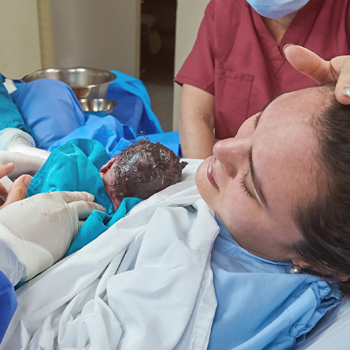
We understand how frightening shoulder dystocia can be, not to mention how traumatic it can be to find that your otherwise healthy child is suffering from complications because of a preventable injury that occurred during birth. The pain you are experiencing can be compounded if you’re facing an ever-increasing pile of medical bills related to the injury.
But do you have a case for a legal claim resulting from your child’s birth-related shoulder dystocia? While it’s best to consult with a birth injury lawyer before you decide whether to move forward with a case, there are a few factors to consider, which we’ll discuss below. First, let’s discuss what shoulder dystocia is and how it occurs.
What To Know About Birth-Related Shoulder Dystocia
Shoulder dystocia is a type of difficult delivery due to the infant’s shoulder becoming stuck inside the birth canal during vaginal birth. If not appropriately resolved, the baby can suffer a nerve injury such as brachial plexus injury or Erb’s palsy.
Complications From Shoulder Dystocia
Shoulder dystocia can cause complications for both the mother and infant. While the injuries usually heal within six to 12 months, there are cases where the complications can be long term, permanent, or even fatal. Complications for the mother can include:
- Tearing of the vagina, cervix, or rectum
- Hemorrhaging
- Bruising of the bladder
- Uterine rupture
Complications for the infant can include:
- Nerve damage in the hand, arm, or shoulder
- Lack of oxygen
- Fractured collarbone or arm
While both mother and child typically heal from their birth injuries quickly, in some cases the infant may suffer permanent injuries such as paralysis, brain damage, or even death.
Causes of Shoulder Dystocia
Shoulder dystocia can happen during only a vaginal birth. In many cases, shoulder dystocia occurs because the baby is too large for the birth canal, the mother is in a position that reduces the amount of room the baby has, or because the infant is in the wrong position. Shoulder dystocia is more likely to occur if a mother:
- Has experienced a shoulder dystocia in a previous delivery
- Has diabetes
- Is extremely overweight or gains too much weight during pregnancy
- Is delivering a large baby
- Has to be induced for delivery
- Is pregnant with twins, triplets, or other multiples
- Has an assisted vaginal birth, such as using forceps or other devices during delivery
Treatment for Birth-Related Shoulder Dystocia
If a healthcare professional expects a mother to be at risk for shoulder dystocia, they may recommend a C-section. Though, oftentimes the infant can still be delivered successfully without harming the brachial plexus nerves. The doctor may try several methods to move the mother and the baby into better positions, including placing pressure on the mother’s pelvis to encourage shoulder rotation, helping the baby’s arm out of the birth canal, or reaching into the vagina to turn the baby by hand.
Do I Have a Case for Birth-Related Shoulder Dystocia?
Doctors, nurses, midwives, and other healthcare professionals are supposed to provide a safe environment for both the baby and the mother. Though tragedies can occur regardless of how cautious the medical practitioners are, some birth injuries occur because the medical providers behave negligently.
When a brachial plexus injury occurs because of a medical mistake, it often occurs when a doctor pulled too hard or didn’t correctly maneuver the infant to relieve the shoulder dystocia. It may also have occurred because the doctor didn’t recognize or correct the injury. If the doctor was insufficiently trained or deviated from the generally accepted standards of care, any injuries that occur during labor and delivery could be the basis for a medical malpractice lawsuit.
Ultimately, determining that you have a medical malpractice case against your doctor depends on whether negligence did happen and whether it can be proven. If you suspect that the doctor, midwife, or other medical provider’s negligence caused your child’s birth injury, you may have the right to hold the healthcare provider responsible for your losses.
Why Choose Janet, Janet & Suggs to Help With Your Shoulder Dystocia Settlement Case?
Shoulder dystocia can result in serious injuries for your infant. After discussing a course of treatment with your physician, a lawyer can help you explore your legal options.
The team at Janet, Janet & Suggs has 40 years of experience working with clients who have been injured because of hospital or doctor errors, and we are proud of our results. We understand how traumatic these cases can be, and are committed to pursuing both justice and maximum compensation for our clients. We have a legal and medical team who have been recognized on a national level for their work helping survivors who we can draw from as we investigate your injuries and build a strong case. If you are suffering because of a potentially avoidable birth injury caused by a medical provider, the team at JJS will not hesitate to work tirelessly on your case in order to hold the negligent parties responsible. For a free, no-obligation review of your shoulder dystocia case, contact us today.
RELATED POSTS
Birth Injury Settlements
Brachial Plexus Injury Lawyers
